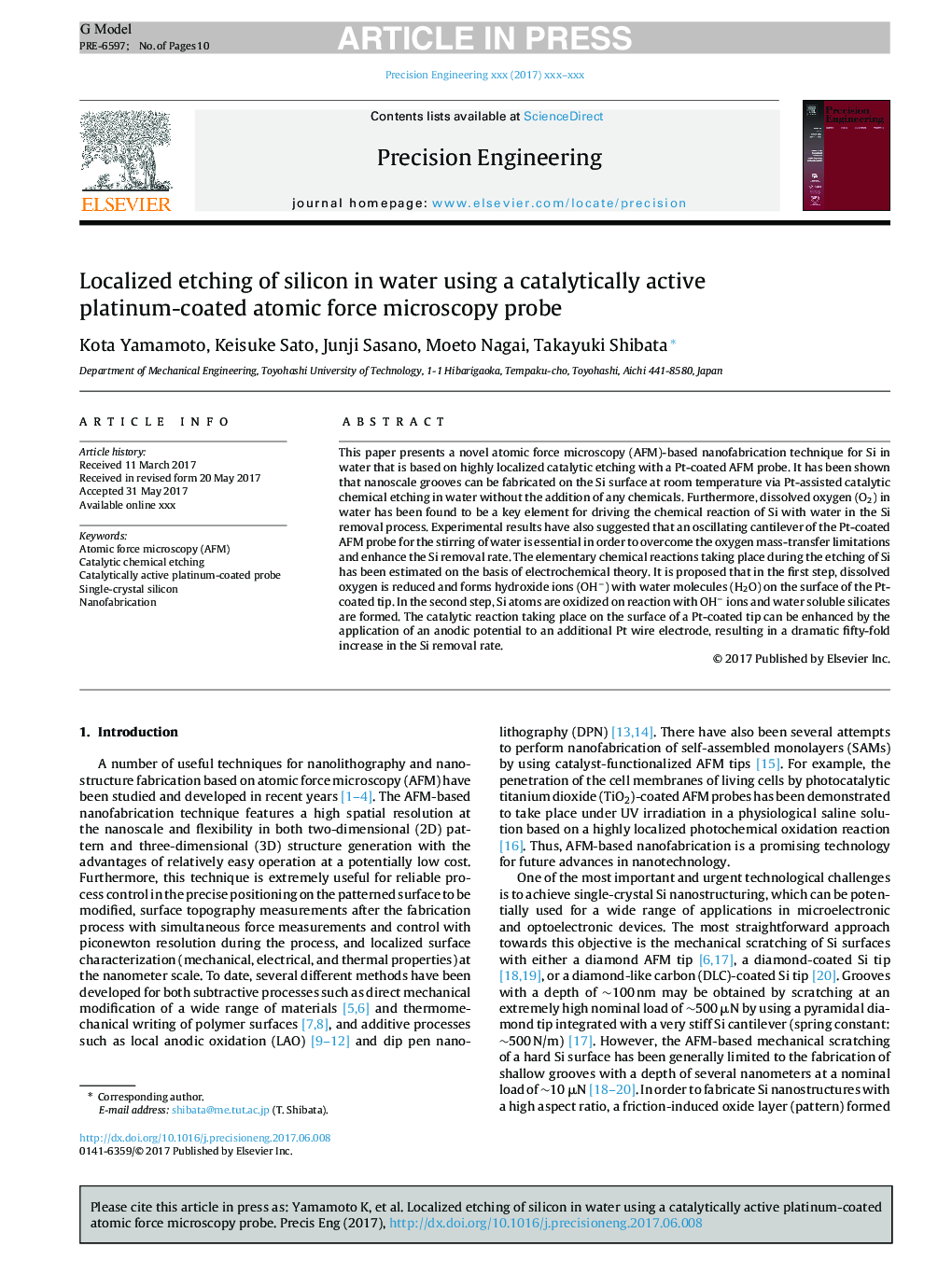| Article ID | Journal | Published Year | Pages | File Type |
|---|---|---|---|---|
| 5019054 | Precision Engineering | 2017 | 10 Pages |
Abstract
This paper presents a novel atomic force microscopy (AFM)-based nanofabrication technique for Si in water that is based on highly localized catalytic etching with a Pt-coated AFM probe. It has been shown that nanoscale grooves can be fabricated on the Si surface at room temperature via Pt-assisted catalytic chemical etching in water without the addition of any chemicals. Furthermore, dissolved oxygen (O2) in water has been found to be a key element for driving the chemical reaction of Si with water in the Si removal process. Experimental results have also suggested that an oscillating cantilever of the Pt-coated AFM probe for the stirring of water is essential in order to overcome the oxygen mass-transfer limitations and enhance the Si removal rate. The elementary chemical reactions taking place during the etching of Si has been estimated on the basis of electrochemical theory. It is proposed that in the first step, dissolved oxygen is reduced and forms hydroxide ions (OHâ) with water molecules (H2O) on the surface of the Pt-coated tip. In the second step, Si atoms are oxidized on reaction with OHâ ions and water soluble silicates are formed. The catalytic reaction taking place on the surface of a Pt-coated tip can be enhanced by the application of an anodic potential to an additional Pt wire electrode, resulting in a dramatic fifty-fold increase in the Si removal rate.
Related Topics
Physical Sciences and Engineering
Engineering
Industrial and Manufacturing Engineering
Authors
Kota Yamamoto, Keisuke Sato, Junji Sasano, Moeto Nagai, Takayuki Shibata,
